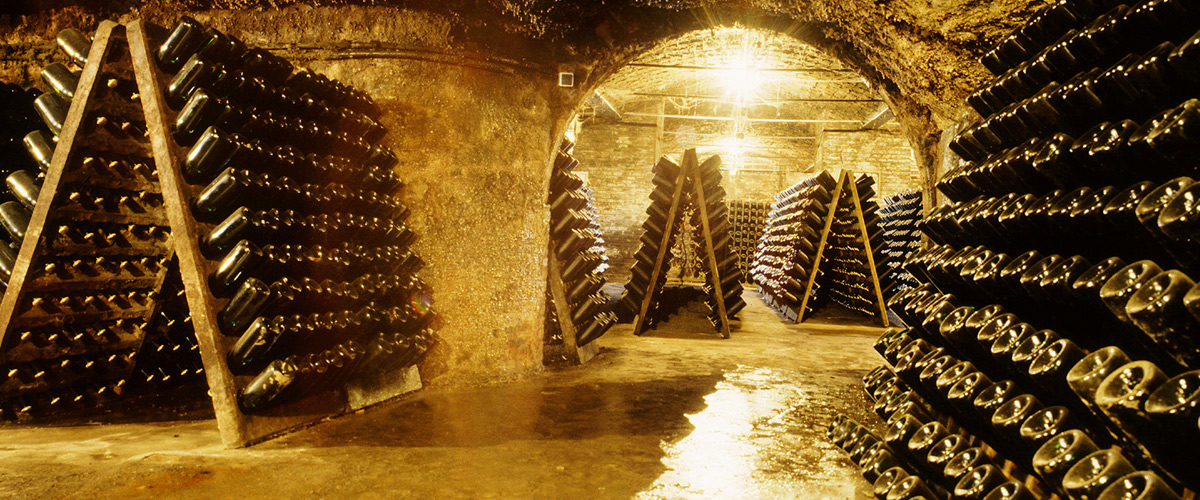Cava

Cava is the term for Spanish sparkling wine made in the same traditional way that Champagne is produced, but with different grapes. Cava means cellar in Spanish and refers to the underground cellars where the wines quietly age in sealed bottles for one year or more before release. Freixenet has some 54kms of underground limestone caves at Sant Sadurni d’Anoia which contain over 120 million bottles of Cava at any one time!
Making Cava using the traditional method has been produced in Catalonia (the area around Barcelona in north east Spain) since the late 19th century. The Spanish use the term cava in the same way that the French use the term "Champagne" in that it is used to describe the region, the winery, the process and the product itself. The essential difference between cava and champagne is that cava is produced in a much warmer climate using local indigenous grape varieties (Parellada, Macabeo and Xarel-lo). The warmer climate produces riper grapes and cava tends to have lower acidity than Champagne.
Cava is separated into different categories based on how long the cava is aged in bottle:
- Cava: minimum 9 months ageing in bottle
- Reserva: minimum 15 months ageing in bottle
- Gran Reserva: minimum 30 months ageing in bottle
Similarly, to Champagne, the style of cava depends on the dosage (amount of sugar in grams per litre). The different styles are:
- Brut Nature: no sugar added
- Brut: <15 g/l
- Dry: 16-35 g/l
- Demi-Sec: 35-50 g/L
- Sweet: >50 g/L
Share this